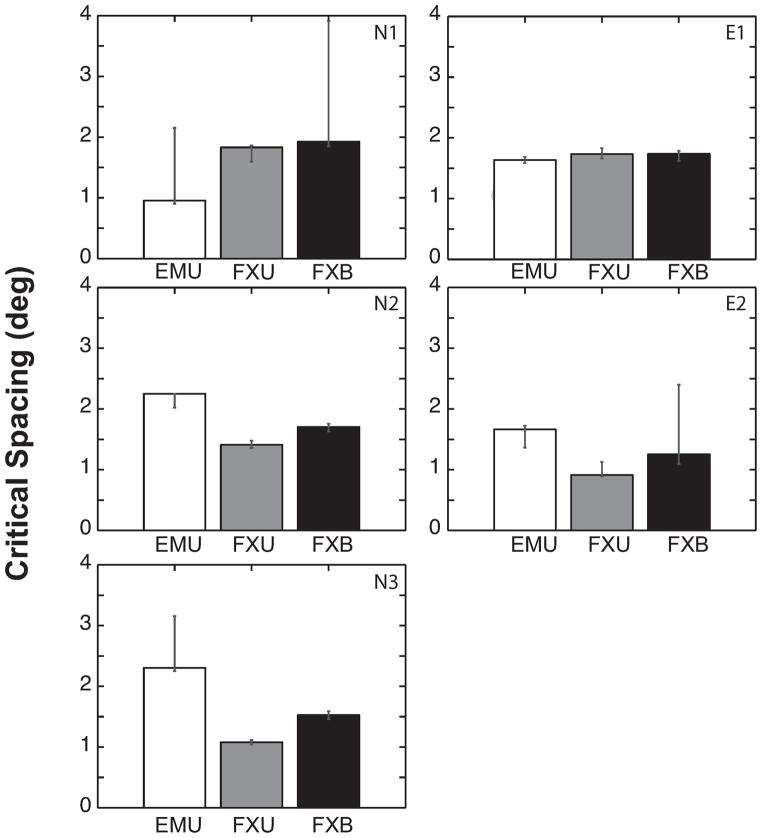Figure 5.
Critical spacing estimated for each viewing condition and observer. Error bars represent the bootstrapped 95% confidence interval, which are noticeably asymmetric. Increased critical spacing means worsening of crowding. For each condition, the lower bound of critical spacing is more tightly estimated than the upper bound. Without eye movements, the estimated critical spacing and its lower bound are reduced in four of five observers with longer viewing duration (FXU vs. FXB), resulting in a small but statistically insignificant difference across all observers [t(4) = 2.635, p = 0.058]. Allowing eye movements (EMU) introduces large individual variability. Compared to the FXU condition, critical spacing increased substantially in the EMU condition for three observers, but overall there was no significant difference between EMU and FXU [t(4) = 0.206, p = 0.847].

